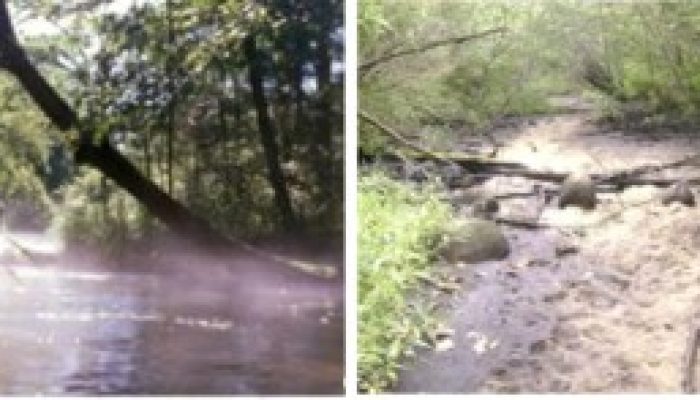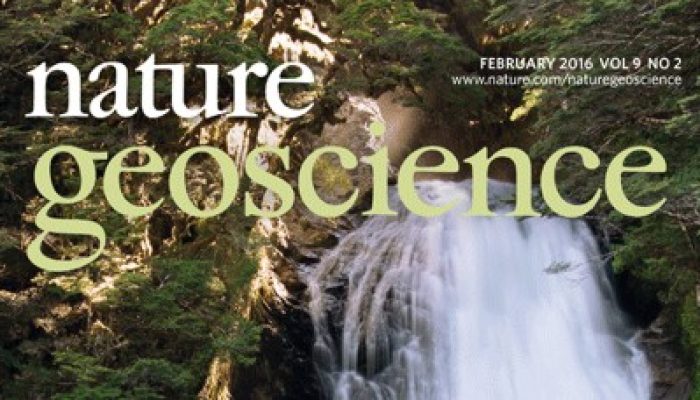Post by Kevin Befus, Assistant Professor at the College of Engineering and Applied Science at the University of Wyoming, in the United States. _______________________________________________ I want to share a book with you that has encouraged me through initial academic mires (I was only in graduate school for 7 years…) and inspired me to expand my perception and appreciation of the natural world. ...[Read More]
Video: Why and how I communicate on social and traditional media, and some mistakes I made along the way…
Display "Why and how I communicate on social and traditional media, and some mistakes along the way…" from Vimeo Click here to display content from Vimeo. Learn more in Vimeo’s privacy policy. Always display content from Vimeo Open "Why and how I communicate on social and traditional media, and some mistakes along the way…" directly Water Underground creator Tom Gle ...[Read More]
The new and exciting face of waterunderground.org
by Tom Gleeson I started waterunderground.org a few years ago as my personal groundwater nerd blog with the odd guest post written by others. Since I love working with others, I thought it would be more fun, and more interesting for readers, to expand the number of voices regularly posting. So here is the new face of the blog… What is the new blog all about? Written by a global collective of ...[Read More]
Can we use an infrared camera to tell us how much groundwater is coming out of the side of a cliff?
By Erin Mundy – a plain language summary of part of her Masters thesis Groundwater is an important resource, with approximately 2 billion people around the world using groundwater everyday. Although most groundwater is beneath our feet, sometimes groundwater leaks out of stream-banks, hill sides and cliff faces – this is called groundwater seepage. Current scientific methods are not ab ...[Read More]
Baseflow, groundwater pumping, and river regulation in the Wisconsin Central Sands
By Sam Zipper, postdoctoral fellow at Madison and author of tacosmog.com We often think of groundwater as a nonrenewable reservoir, deep underground, and with good reason – less than ~6% of groundwater globally entered the ground within the past 50 years. However, where a river or stream intersects the water table, water is able to move from the aquifer to the stream (or vice versa). This supply o ...[Read More]
Nature Geoscience digging into water underground this month!
Nature Geoscience is digging hard into water underground – the February issue is part of a special focus on groundwater. The cover this month is a gorgeous (groundwater-filled?) waterfall by Glen Jasechko, Scott’s brother. The groundwater focus includes: commentary on drought in the Anthropocene, led by Anne van Loon news and views pieces by Ying Fan and Tamara Goldin our paper on the ...[Read More]
The Groundwater Wetlands and Bogs Study Group
The Groundwater Wetlands and Blogs Study Group is an unfunded, voluntary collaboration of professionals, formed in December 2012, focused on groundwater wetlands, bogs, and related systems. The Study Group has about 250 members in 39 countries. Study Group members communicate primarily through a disciplined Yahoo Group listserve. We are not a social network nor are we an environmental advocacy g ...[Read More]
Groundwater is NOT photogenic!
One of the first things I realized when designing this blog was that groundwater is not photogenic, in the extreme. Seriously: I dare every hydrogeologist to go to google images and search ‘groundwater‘. You find something like this: I am not saying that I dislike conceptual models or think they are ugly. I actually quite like them, which maybe explains my current profession! But I ...[Read More]
A social media dashboard for researchers – taming the digital anarchy for nerds
Is anyone else overwhelmed by updating their many webpages, blogs, streams etc? Jason Priem described the shift from a paper-native academia to a web-native academia, in an excellent article last year in Nature, a shift well beyond the traditional peer-reviewed journal to more diverse outlets of information, interaction and discussion. I am part of the first generation of researchers who are excit ...[Read More]
How to peer review: skill-building in a grad classes
I teach how to peer-review in graduate class because I think it is a core skill for any professional. I first demystify peer-reviewing and academic journals, and answer questions that all students have about these topics that they have heard about but rarely learn about using this: I describe my personal experience as a manuscript submitter, reviewer and associate editor. And then I outline the s ...[Read More]









